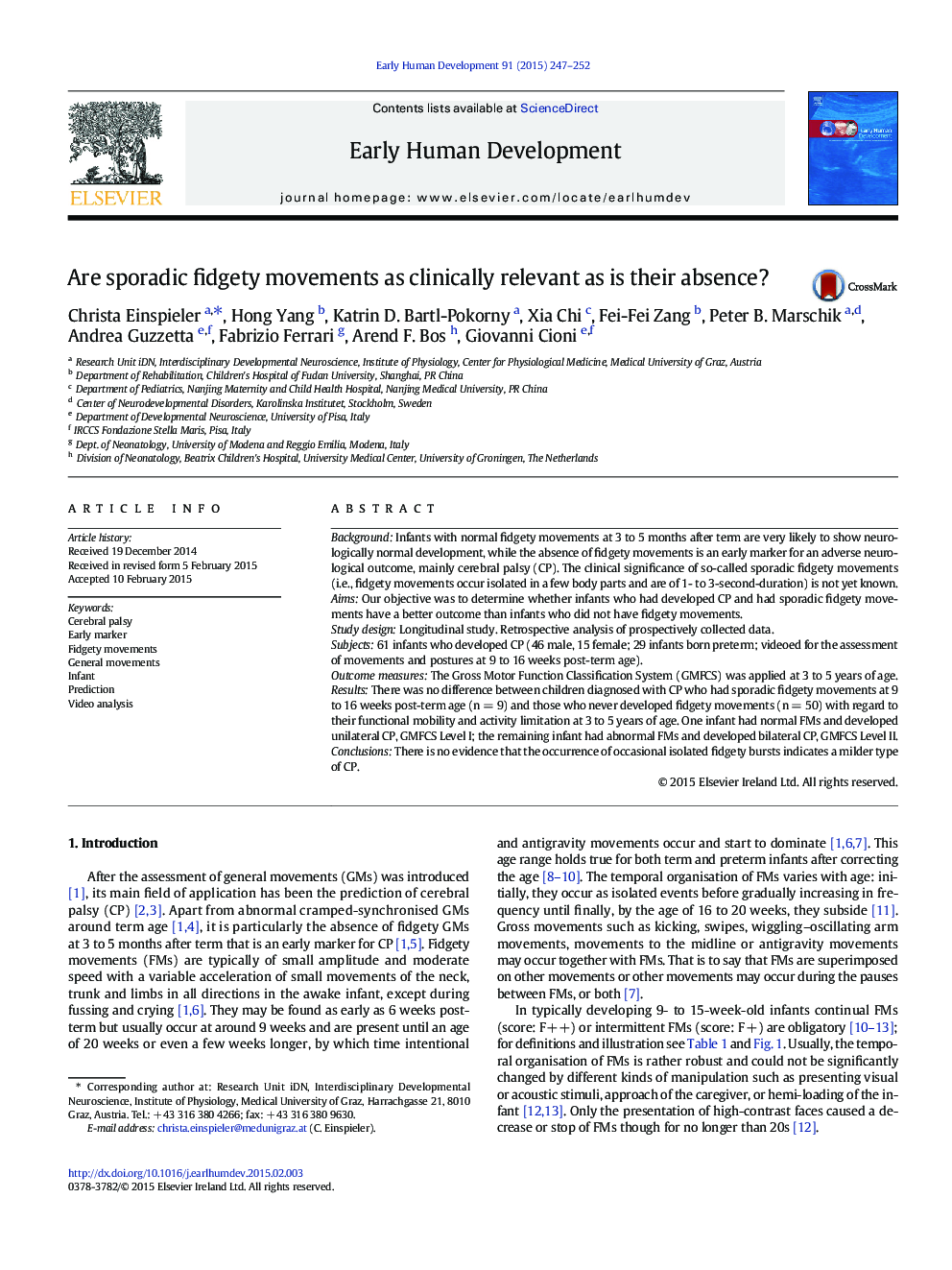| کد مقاله | کد نشریه | سال انتشار | مقاله انگلیسی | نسخه تمام متن |
|---|---|---|---|---|
| 3916879 | 1252079 | 2015 | 6 صفحه PDF | دانلود رایگان |
• We described the temporal organisation of fidgety movements (FMs).
• Sporadic FMs last 1 to 3 s; the intervals between those bursts can last up to 1 min.
• We analysed the association between FMs and later activity limitations.
• Sporadic FMs in high-risk infants did not prove diagnostically conclusive.
BackgroundInfants with normal fidgety movements at 3 to 5 months after term are very likely to show neurologically normal development, while the absence of fidgety movements is an early marker for an adverse neurological outcome, mainly cerebral palsy (CP). The clinical significance of so-called sporadic fidgety movements (i.e., fidgety movements occur isolated in a few body parts and are of 1- to 3-second-duration) is not yet known.AimsOur objective was to determine whether infants who had developed CP and had sporadic fidgety movements have a better outcome than infants who did not have fidgety movements.Study designLongitudinal study. Retrospective analysis of prospectively collected data.Subjects61 infants who developed CP (46 male, 15 female; 29 infants born preterm; videoed for the assessment of movements and postures at 9 to 16 weeks post-term age).Outcome measuresThe Gross Motor Function Classification System (GMFCS) was applied at 3 to 5 years of age.ResultsThere was no difference between children diagnosed with CP who had sporadic fidgety movements at 9 to 16 weeks post-term age (n = 9) and those who never developed fidgety movements (n = 50) with regard to their functional mobility and activity limitation at 3 to 5 years of age. One infant had normal FMs and developed unilateral CP, GMFCS Level I; the remaining infant had abnormal FMs and developed bilateral CP, GMFCS Level II.ConclusionsThere is no evidence that the occurrence of occasional isolated fidgety bursts indicates a milder type of CP.
Journal: Early Human Development - Volume 91, Issue 4, April 2015, Pages 247–252
